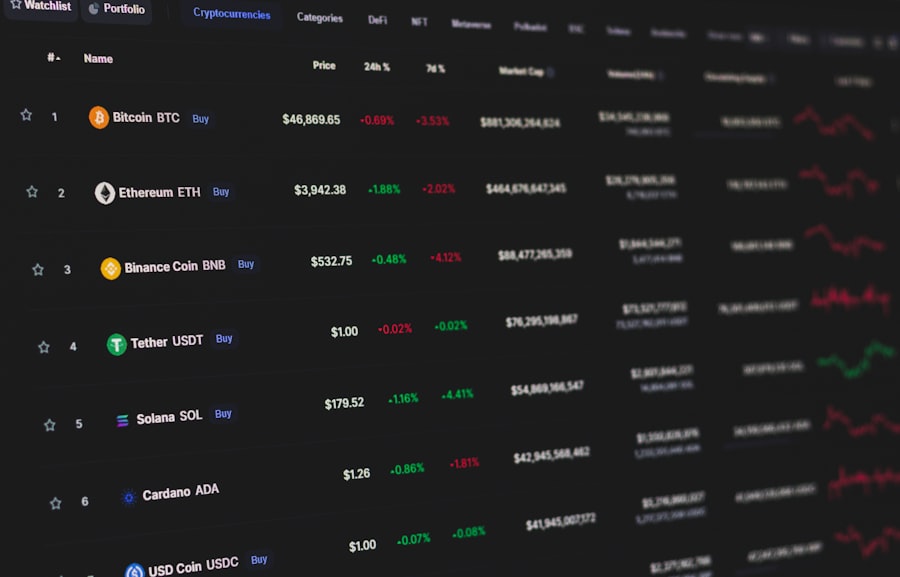
Mastering Ice Commodity Trading: Essential Courses
Ice commodity trading refers to the buying and selling of various commodities on the Intercontinental Exchange (ICE), which is a global marketplace for trading a wide range of assets, including energy products, agricultural goods, and financial instruments. The ICE has become a significant player in the commodities market, providing a platform for traders to engage in transactions that can influence global supply and demand dynamics. Understanding the fundamentals of ice commodity trading is crucial for anyone looking to navigate this complex landscape.
At its core, ice commodity trading involves the exchange of contracts that represent the future delivery of a specific commodity. These contracts can be based on physical goods, such as crude oil or coffee, or financial instruments that derive their value from underlying assets. Traders can take long or short positions depending on their market outlook, with the goal of profiting from price fluctuations.
The ICE operates on a centralized exchange model, which means that all trades are executed through a regulated platform, ensuring transparency and reducing counterparty risk.
Key Takeaways
- Ice commodity trading involves buying and selling contracts for the future delivery of ice, which is used in various industries such as food and beverage, pharmaceuticals, and construction.
- Market trends and price movements in ice commodity trading are influenced by factors such as weather conditions, supply and demand dynamics, and geopolitical events.
- Risk management strategies for ice commodity trading include diversification, hedging, and using stop-loss orders to limit potential losses.
- Different trading platforms and tools, such as futures exchanges and online trading platforms, provide opportunities for traders to participate in ice commodity markets.
- Technical analysis involves using historical price data and chart patterns to forecast future price movements, while fundamental analysis focuses on analyzing supply and demand fundamentals and macroeconomic factors affecting ice commodity prices.
Analyzing Market Trends and Price Movements
To succeed in ice commodity trading, one must develop a keen understanding of market trends and price movements.
For instance, fluctuations in crude oil prices can be influenced by geopolitical tensions, changes in production levels by OPEC countries, or shifts in consumer demand.
By closely monitoring these factors, traders can make informed decisions about when to enter or exit positions. Technical analysis plays a vital role in understanding price movements within the ice commodity markets. Traders often utilize charts and various indicators to identify patterns and trends that may signal potential price changes.
For example, moving averages can help smooth out price data to identify trends over specific periods, while relative strength index (RSI) can indicate whether a commodity is overbought or oversold. By combining technical analysis with an understanding of fundamental factors, traders can develop a more comprehensive view of the market.
Risk Management Strategies for Ice Commodity Trading

Risk management is an essential component of successful ice commodity trading. Given the inherent volatility of commodity markets, traders must implement strategies to protect their capital and minimize potential losses. One common approach is to use stop-loss orders, which automatically close a position when a commodity reaches a predetermined price level.
This helps limit losses in case the market moves against the trader’s position. Another effective risk management strategy involves diversifying one’s portfolio across different commodities. By spreading investments across various assets, traders can reduce their exposure to any single commodity’s price fluctuations.
For instance, a trader who invests in both agricultural products and energy commodities may find that losses in one sector can be offset by gains in another. Additionally, maintaining a disciplined approach to position sizing—determining how much capital to allocate to each trade—can further mitigate risk and enhance overall trading performance.
Exploring Different Trading Platforms and Tools
| Platform/Tool | Features | User-Friendly | Cost |
|---|---|---|---|
| MetaTrader 4 | Advanced charting, technical analysis tools, automated trading | Yes | Free |
| Thinkorswim | Customizable charts, extensive research tools, paper trading | Yes | Free with account |
| NinjaTrader | Advanced analysis tools, strategy development, market replay | Yes | Free with live data subscription |
| TradingView | Social networking, advanced charting, idea sharing | Yes | Free with limited features |
The choice of trading platform can significantly impact a trader’s experience in the ice commodity markets. Various platforms offer different features, tools, and resources that cater to the needs of both novice and experienced traders. Some popular platforms include MetaTrader 4 (MT4), TradingView, and Thinkorswim, each providing unique functionalities such as advanced charting tools, real-time data feeds, and customizable indicators.
In addition to trading platforms, traders can benefit from utilizing various tools designed to enhance their trading strategies. For example, economic calendars provide insights into upcoming events that may affect commodity prices, such as government reports on inventory levels or crop yields. Furthermore, sentiment analysis tools can help traders gauge market sentiment by analyzing social media trends or news articles related to specific commodities.
By leveraging these resources, traders can make more informed decisions and improve their overall trading performance.
Leveraging Technical and Fundamental Analysis
A successful ice commodity trader must be adept at both technical and fundamental analysis. Technical analysis focuses on historical price movements and patterns to forecast future price behavior. Traders often use chart patterns such as head and shoulders or double tops to identify potential reversal points in the market.
Additionally, indicators like Bollinger Bands or MACD (Moving Average Convergence Divergence) can provide insights into market momentum and potential entry or exit points. On the other hand, fundamental analysis examines the underlying factors that influence supply and demand for commodities. This includes analyzing economic data such as GDP growth rates, employment figures, and inflation rates that can impact consumer behavior and commodity consumption.
For instance, an increase in global economic activity may lead to higher demand for energy products like oil and natural gas. By combining both technical and fundamental analysis, traders can develop a more holistic view of the market and make more informed trading decisions.
Developing Effective Trading Plans and Strategies

Key Components of a Trading Plan
A comprehensive trading plan should include criteria for selecting trades based on technical indicators or fundamental factors.
Backtesting Strategies for Success
Moreover, backtesting strategies against historical data can provide valuable insights into their effectiveness before applying them in live markets. For example, a trader might test a strategy based on moving average crossovers over several years of historical data to determine its profitability under various market conditions.
Building Confidence in Trading Strategies
This process not only helps refine strategies but also builds confidence in their application when real money is at stake.
Incorporating Options and Futures Trading in Ice Commodities
Options and futures contracts are integral components of ice commodity trading that allow traders to hedge against price fluctuations or speculate on future price movements. Futures contracts obligate the buyer to purchase a specific quantity of a commodity at a predetermined price on a specified date in the future. This mechanism provides traders with leverage but also exposes them to significant risk if prices move unfavorably.
Options contracts offer more flexibility than futures by giving traders the right—but not the obligation—to buy or sell a commodity at a specified price before a certain date. This characteristic allows traders to implement various strategies such as covered calls or protective puts to manage risk effectively. For instance, a trader holding a long position in crude oil futures might purchase put options as insurance against potential price declines.
By incorporating options and futures into their trading strategies, traders can enhance their ability to navigate the complexities of ice commodity markets.
Advanced Trading Techniques and Tactics for Ice Commodity Markets
As traders gain experience in ice commodity trading, they may seek to employ advanced techniques and tactics to enhance their performance further. One such technique is algorithmic trading, which utilizes computer algorithms to execute trades based on predefined criteria. This approach allows for rapid execution of trades and can capitalize on short-term price discrepancies that may arise in volatile markets.
Another advanced tactic involves employing spread trading strategies, where traders simultaneously buy and sell different contracts related to the same commodity or correlated commodities. For example, a trader might go long on crude oil futures while simultaneously shorting gasoline futures if they anticipate a widening spread between the two due to seasonal demand fluctuations. This strategy can help mitigate risk while allowing traders to profit from relative price movements.
Additionally, understanding market psychology plays a crucial role in advanced trading techniques.
Utilizing tools like sentiment indicators or monitoring social media trends can provide valuable insights into prevailing market attitudes.
In conclusion, ice commodity trading encompasses a wide array of strategies and techniques that require careful consideration and analysis. By mastering the fundamentals of trading, analyzing market trends, implementing effective risk management strategies, leveraging technology, and developing comprehensive trading plans, traders can navigate this dynamic market with greater confidence and success.
FAQs
What is commodity trading?
Commodity trading involves the buying and selling of raw materials or primary agricultural products such as gold, oil, coffee, and wheat. It is a complex process that requires knowledge of market trends, supply and demand dynamics, and risk management.
What are commodity trading courses?
Commodity trading courses are educational programs designed to provide individuals with the knowledge and skills needed to trade commodities effectively. These courses cover topics such as market analysis, trading strategies, risk management, and the use of trading platforms.
Why are commodity trading courses important?
Commodity trading courses are important because they provide individuals with the necessary knowledge and skills to navigate the complexities of the commodity market. They help traders understand market dynamics, develop effective trading strategies, and manage risks associated with commodity trading.
Who can benefit from commodity trading courses?
Commodity trading courses are beneficial for individuals who are interested in pursuing a career in commodity trading, as well as for experienced traders looking to enhance their skills and knowledge. These courses are also valuable for investors and professionals in related industries who want to understand commodity market dynamics.
Where can one find commodity trading courses?
Commodity trading courses are offered by various educational institutions, trading firms, and online platforms. Interested individuals can find these courses through a simple internet search or by contacting relevant educational institutions and trading firms.


